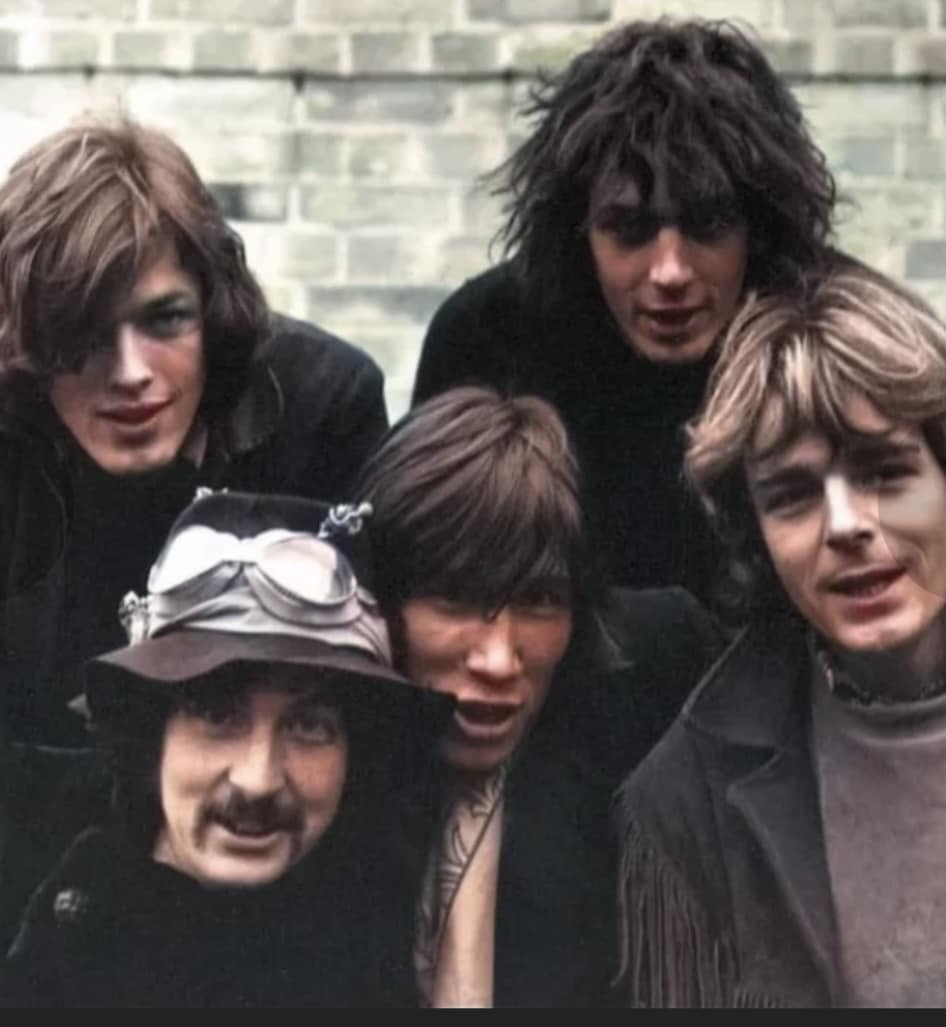News
How Did Pink Floyd Get Their Name?
The legendary rock band Pink Floyd is known for their innovative and often psychedelic music. But where did their unique name actually come from? As it turns out, they have the band’s original frontman, Syd Barrett, to thank for the memorable moniker. Barrett combined the names of two obscure American blues musicians who were heroes of his – Pink Anderson and Floyd Council. By fusing Anderson’s first name and Council’s last, he paid homage to his blues roots while also coined an unforgettable band name. Pink Floyd emerged in the 1960s British underground scene, bringing both blues influences and experimental elements to their sound.
Table of Contents
How did Pink Floyd get their name?
The story of how Pink Floyd got their legendary name is actually quite straightforward, though the moniker itself has taken on mythic status. In 1965, the band was originally called “The Tea Set” when they discovered another group using the same name. Needing an immediate replacement, co-founder and original frontman Syd Barrett drew inspiration from his love of blues records. Specifically, he combined the first names of two obscure American blues artists – Pink Anderson and Floyd Council. By fusing them together, he paid homage to his blues roots while also birthing an entirely new band identity.
Initially dubbed “The Pink Floyd Sound,” the article was soon dropped, then the word “The.” Few could have predicted how synonymous the resulting two-word phrase would become with pioneering psychedelic rock. Though completely random in origin, “Pink Floyd” was the perfect encapsulation of the band’s inventive, experimental musical identity. Thanks to the quick thinking of Syd Barrett during a forgotten gig long ago, the rock lexicon gained one of its most iconic band names.

From Bluesy Beginnings to Psychedelic Innovators
Pink Floyd’s name speaks to their roots – the obscure bluesmen that originally inspired Syd Barrett. But how did their sound evolve from the British blues scene that birthed them to the psychedelic rock icons they became?
In the mid-60s London underground, Pink Floyd began as an electric blues band, following in the footsteps of peers like The Rolling Stones and The Yardbirds. Barrett’s creative guitar and vocal experiments slowly stretched their songs into more improvisational territories. These avant-garde tendencies defined their unique niche – fusing blues rock with increasingly expansive psychedelia.
After Barrett’s departure, Roger Waters and David Gilmour furthered this inventive spirit. Throughout the late 60s, their albums pioneered unconventional recording and production approaches, from incorporating found sounds and tape loops to exploring extended instrumental compositions and surreal lyrical themes. By the 70s, albums like The Dark Side of the Moon and Wish You Were Here made them global icons of progressive rock ambition.
Yet that blues origin point remained embedded in their DNA. It was the initial jumping-off point that enabled their radical reinvention of rock conventions in the decades that followed. From the blues-psychedelic fusion of early tracks like “Interstellar Overdrive” to the majestic arena rock of “Comfortably Numb,” Pink Floyd consistently expanded notions of sound, song structure and conceptual cohesion in albums.
So while the image of Pink Anderson or Floyd Council’s earthy blues style might seem worlds apart from Pink Floyd’s space-rock spectacle, that underground London blues scene was integral. It provided the initial spark that ignited 50 years of continuous musical exploration under the deceptively colorful banner of Pink Floyd.
Intrigued by Pink Floyd’s genre-busting sound? Dive deeper into their singular style and explore the many musical dimensions behind their psychedelic rock revolution in our article “What Genre Is Pink Floyd.”
The Enduring Mystique of a Memorable Name
While Pink Floyd’s name originated as a spur-of-the-moment decision five decades ago, it has become one of the most iconic band names in rock history. But why has this nonsensical moniker endured so strongly in the cultural imagination?
Part of the allure is the striking color imagery it conjures. The pairing of vibrant pink and opaque floyd seems to reflect the neon hues of psychedelia. It captures the sensory adventurousness of 60s rock experimentation. Somehow this odd collision of words perfectly suits the surreal dreamscapes in their music.
The name also retains an air of mystery. While connected to Syd Barrett’s blues heroes, Pink Floyd as a phrase has no intrinsic meaning. That blank canvas quality allows fans to endlessly project their own associations onto it. It can evoke anything from the glittering echo of their celestial guitar solos to the alien transmissions pulsing through their most far-out space rock adventures.
There is also the openness of the name – two mundane first names can belong to anyone. This everyman quality syncs with Roger Waters’ lyrical focus on universality – songs that wrestle with human struggles in a sensitive yet spectacular way. The opaque familiarity of “Pink Floyd” makes room for that relatability.
So while their name was borne from happenstance, it has earned its iconic status through a singularly adventurous career. Whether conjuring trippy 1960s London or the dystopian dreamscapes of The Wall, “Pink Floyd” retains that unpredictable spark. Syd Barrett’s random blessing gave them the perfect name to constants reinvent, explore and inspire.
And so we return to our initial question – how did Pink Floyd get their name? As we’ve discovered, it originated in a serendipitous moment – Syd Barrett fusing together two obscure blues artists to conjure an entirely new entity. That spur-of-the-moment creativity gave Pink Floyd the blank canvas they would endlessly reinvent. Now, their name intrinsically links to sonic innovation, otherworldly live performances, and some of rock’s most untouchable albums. All stemming from a random decision one afternoon to name a fledgling band.




